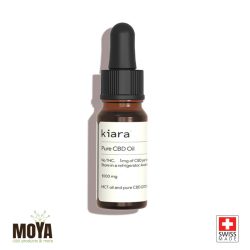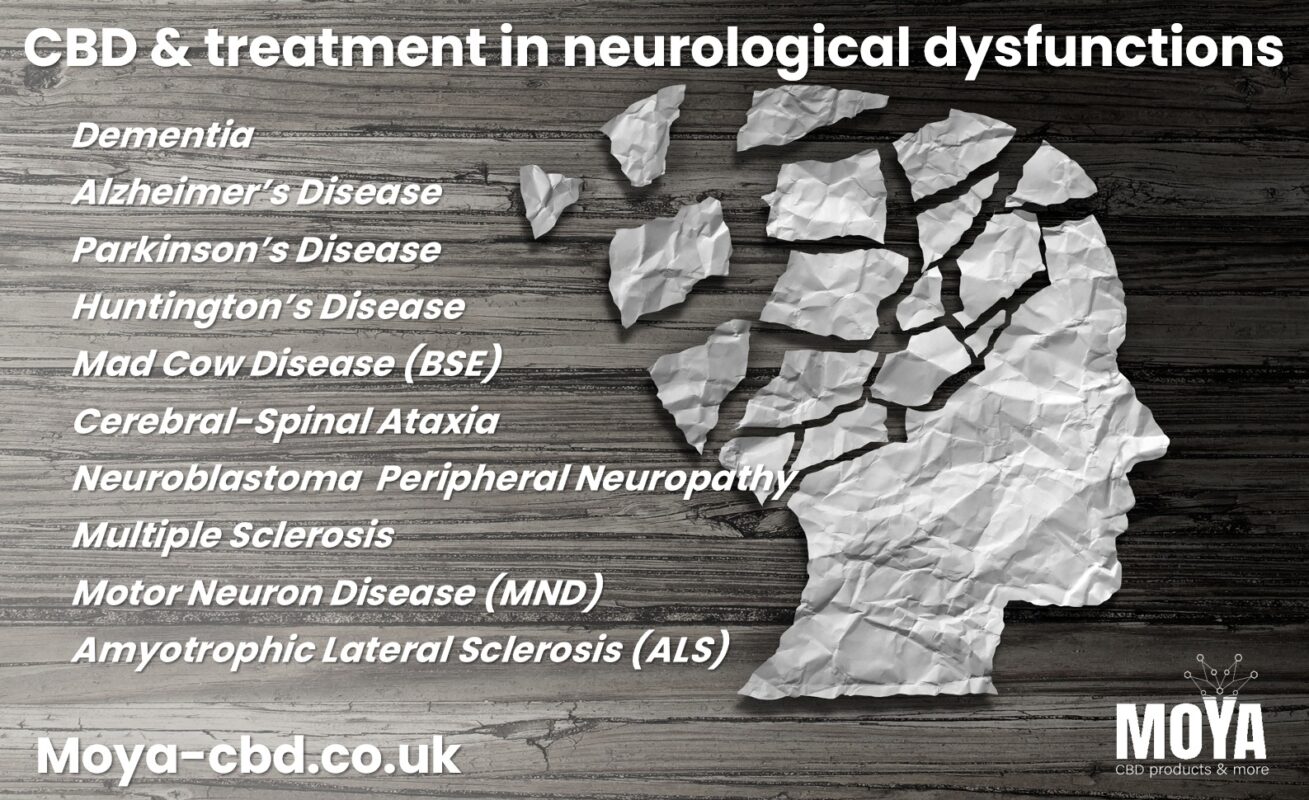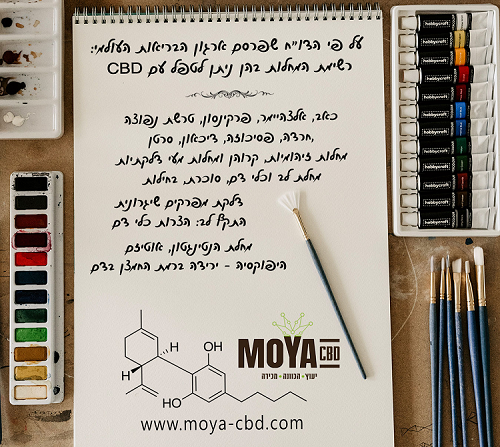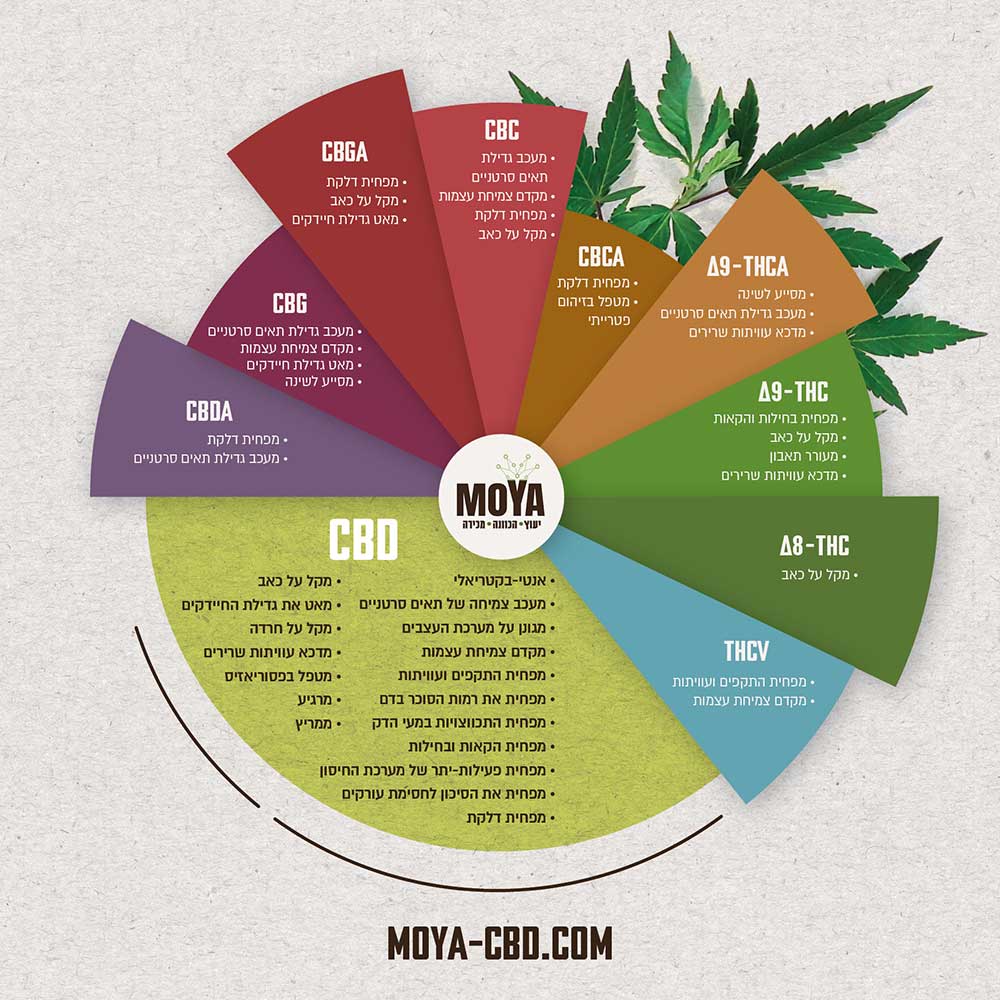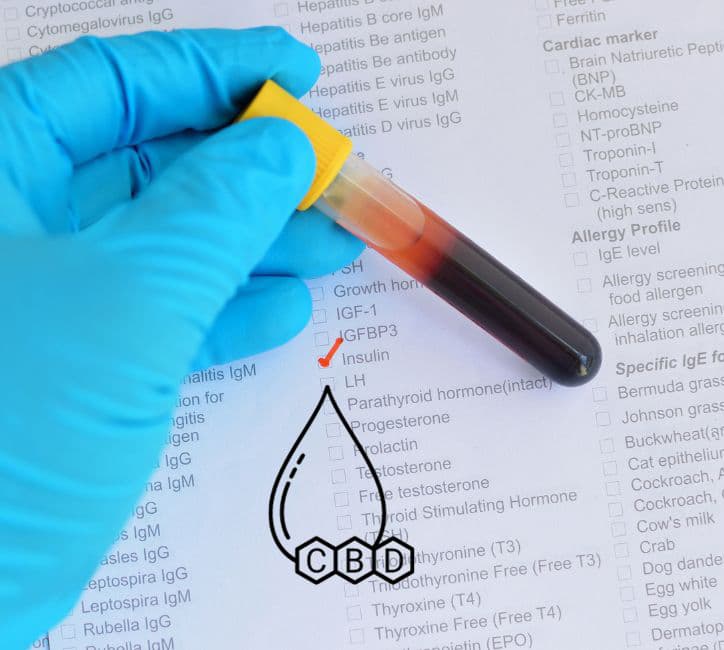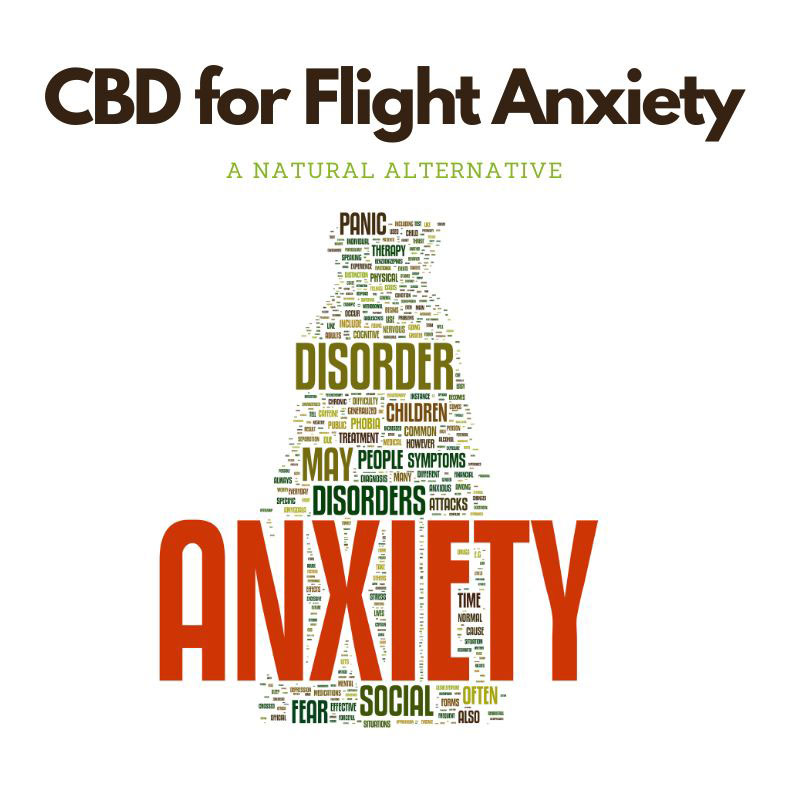The reason why it is relevant to medicinal cannabis is that CBD is now known to increase serum levels of anandamide.
Anandamide is broken down by affluent hydrolysis of fatty acid, Fatty Acid Amide Hydrolase (FAAH), an integral membrane enzyme. Anandamide is transmitted to FAAH enzymes by a protein that binds to FABP (Fatty Acid Binding Protein). FABP are proteins responsible for transferring other molecules through cell membranes. CBD inhibits FABPs, which in turn disrupts the delivery of Anandamide to FAAH, and therefore increases serum levels of anandamide.
Interestingly, researchers have also shown that non-cannabinoid cannabis compounds also inhibit the enzyme Monoacylglycerol Lipase (MAGL), an enzyme responsible for breaking down 2-AG. Effects of cannabinoids and cannabinoid-enriched Cannabis extracts on TRP channels and endocannabinoid metabolic enzymes
Cannabinoids in Recovery After Stroke
CBD and various other cannabinoids have been repeatedly studied to assess their protective effects on nerve cells during and after an Ischemic Stroke (IS). While there are various studies that indicate that cannabis use can increase the risk of stroke, this phenomenon appears to be limited to a small subs set of sensitive people.
In 27% of these cases, contraction of reversible cerebral blood vessels triggered by the use of cannabinoids may be an important mechanism of stroke. For most, cannabinoid treatments appear to have great potential for alleviating inflammation and oxidative stress due to an IS. CBD is heavily tested as a protective substance on nerve cells for an ischemic stroke.
See sample research: Therapeutic Potential of Non-Psychotropic Cannabidiol in Ischemic Stroke
Recent studies have shown that cannabidiol increases blood flow in the brain following IS and thus helps reduce infarction volume.
Repeated 14-day treatment of CBD (10 mg/kg) has led to the likelihood of hypothermia and protective effects on nerve cells. For this reason, CBD is seen as having greater therapeutic potential than THC in this field of research. It has also been shown that CBD reduces inflammation caused by the release of interlaoquine -1, nitric oxide (nitric oxide) and tumour necrosis factor-α following an ischemic stroke. Just as in the Traumatic Brain Injury, much of the damage caused by IS is due to oxidative stress, caused by the accumulation of ROS due to excessive glutamate signaling.
Both THC and CBD have been shown to be effective antioxidants (as previously proven) that inhibit glutamatergic signaling, thereby reducing the extent of ROS accumulation following an ischemic stroke. However, CBD again shows greater efficacy as an antioxidant and therefore has greater therapeutic potential than THC for neurodegenerative conditions.
Glutamate & Cannabinoid Signaling
Glutamate is the most common neurodevelopmental conductor in the human brain. It is a stimulating neurotransmitter that plays a role in neural pathways involved in the plasticity of synapses. By strengthening or weakening signaling between neurons, glutamate plays an essential role in learning and memory.
Arguably the most important neurotransmitter in the brain, which shapes the way a person retains information and is an important player in long-term potential. However, extremely high glutamate levels cause nerve toxicity (especially mediated by NMDA, AMPA and glutamate receptors) and lead to the formation of secondary damage-causing compounds such as ROS and Tumor necrosis factor-α. It is also known that glutamate activity is reduced in the presence of antioxidants.
Since CBD and THC have been shown to be antioxidants, there is a clear basis for further investigation of cannabinoids in this particular area of neurology. The interactions between different cannabinoids and glutamate signaling system were studied in a study titled Antioxidants That Protect Nerve Cells from Marijuana, published in 2000.
In this study, cannabidiol and several other cannabinoids were studied for potentially protecting nerve cells in rats, in neuronal cultures exposed to toxic levels of glutamate. CBD has introduced the most excellent antioxidant properties to prevent glutamate toxicity
Independent Mechanism in Cannabinoid Receptors
The authors of the study on antioxidants that protect nerve cells from marijuana have also shown that both THC and CBD have increased neural defence and reduced the neurotoxic toxicity of NMDA (N-methyl-D-aspartate receptor) and AMPA receptor (α-amino-3-hydroxy-5-methyl-4-isoxazolepropionic acid receptor). Moreover, the level of neural protection was not increased by the action of antagonists for specific cannabinoid receptors, suggesting that the mechanism of action was independent of the cannabinoid receptors. Previous studies have concluded that CB2 receptors play a role in these important cellular processes. This forms the basis of the idea that selective agonists for this type of receptor (CB2) may act on “both sides of the coin by providing protection for healthy neural cells, or by causing apoptosis of tumour cells. However, CBD does not usually act as an agonist for these receptors, so the potential that protects its nerve cells must be realized elsewhere. CBD has also been shown to reduce hydroperoxide (a type of ROS) toxicity in neuronal cultures, further proving its effectiveness as an antioxidant. Although these tests were performed in vitro, preliminary studies in vivo on brain ischemia in rats indicate that it is effective against all symptoms.
Hypoxic-ischemic event at birth (lack of oxygen)
A significant cause of brain injury during the new-born is a hypoxic-ischemic event during childbirth. this occurs when the flow of oxygen and blood to the baby’s brain is interrupted by suffocation, often during childbirth. This devastating condition leads to the deaths of 15-20% of children diagnosed. this condition can also lead to severe neurological impairment such as epilepsy, cerebral palsy, motor function disorder and hyperactivity in another 25%.
The developing brain is much more susceptible to hypoxymical events than the adult brain. because it contains a high concentration of blood vessels and a higher water content, the potential for damage-provoking events like bleeding is greater. Immediately after hypoxic-ischemic brain injury, a set of specific cellular mechanisms that include increased production of glutamate gets underway, leading to cell damage and eventually leads to Excitotoxicity (a type of cell death caused by stimulating glutamate signaling). The exact nature of this process is not yet fully understood because of the complexity of the molecular mechanisms underlying the situation. as such, there are a minority of effective treatment options to mitigate the degree of nerve damage.
However, now, rapid progress in our understanding of the field has led to a new type of protective treatments for nerve cells that will be performed and implemented if proven to be effective. the endocannabinoid system is under review to verify its specific role in providing neural protection to the developing brain.
While the use of cannabinoid treatments in children remains controversial, there have been enough successes in the use of cannabinoids in various situations in children (including epilepsy and cancer) without harmful side effects. As a result, the dispute is now quickly replaced by a consensus among the scientific community that such treatments have feasibility and implementation. Cannabinoids have been offered as good candidates for treating birth brain injuries. In addition to regulating neural reactions, cannabinoids have been shown to regulate vascular dilation due to endothelial cell function and Endothelin activity (endothelin), regulate calcium homeostasis and have significant effects against axytotoxy and anti-inflammatory.
The Protective Properties Of THC Nervous System Cells For The Aging Population
A study published in Nature Medicine in 2017 received a lot of media attention for its slightly unusual claim that THC has new effects on the aging brain. Even Forbes and the Guardian have published articles on this study.
For the purpose of conducting the clinical trial called “Chronic Low Dose of Δ9-Tetrahydrocannabinol (THC) restores cognitive function in older mice,” the researchers introduced low doses of THC into mice of different ages: 2, 12 and 18 months.
In other words, young, mature, old mice. This procedure was performed regularly for four weeks. The size of the dose is significant due to the fact that such small doses do not have psychoactive effects like those resulting from the amounts consumed for recreational use, which are usually larger. During one month, the team led by prof. Andreas Zimer assessed the ability of mice to perform cognitive tasks such as water maze tests.
The team observed the mice’s ability to recall the location of spots or identify other subjects of the same species they had previously been exposed to. Strangely, young mice who did not receive regular low doses of THC performed better in the behaviour tests for memory and learning than younger mice who received regular doses of THC on the other hand, the opposite was for older mice: those who received low and regular doses of THC showed better results in tests than older and older mice who did not receive THC. Cognitive decline as a result of aging is not considered a degenerative disease, although it can be considered pathological. There is almost no treatment for age-related cognitive decline other than maintaining a healthy diet, exercise and brain activity. Rodent studies have shown that THC may in the future have the potential for medical application especially in the treatment of cognitive deficits in the aging population, although studies in humans are required to confirm these results.
Cannabinoid Acids For Nerve Protection
This article has primarily investigated THC and CBD Phyto-cannabinoids but there is also research on cannabinoids in their acidic form THCA and CBDA these are predecessors of THC and CBD and exist before the de-carboxilation process occurs. De-carboxylation (heating above 105°C) removes the group of carboxyl acids, making THCA into THC and CBDA into CBD.
See link: An update on PPAR activation by cannabinoids
In this study published in 2017 in the British Journal of Pharmacology, researchers examined the potential of six Phyto- cannabinoids on Tying PPARγ. PPARγ (Peroxisome proliferator-activated receptor) is a nuclear transcription factor and usually has an application for the treatment of diabetes. This is because it regulates insulin response in fat cells.
However, the activation of PPARγ also affects microglia, so it has recently aroused interest in its application in chronic neuro-inflammatory diseases. The study: PPARγ, neuroinflammation, and disease, found that cannabinoid acids bind and activate using PPARγ much better than their de-carboxyne neutral variants. THCA has been found to protect nerves in mice, improving motor deficits and preventing stereotypical degeneration.
The acidic form of THC is not psychoactive, so it is a medical cannabinoid especially relevant to the investigation. Being non-psychoactive, suitable for the broad demographics of people, including children and the elderly, who are most prone to degenerative conditions of nervous system cells.
Efficacy of Synthetic Cannabinoids
Like endocannabinoids and Phyto-cannabinoids, attention is now devoted to the potential of various synthetic cannabinoids. For example, a study published in 1999 by the Journal of Neuroscience found that the synthetic cannabinoid atonist R (+) – WIN 55212-2 reduces the loss of neurons in the in vivo lippocampus due to global brain ischemia in rats.
Cannabinoids and Neuroprotection in Global and Focal Cerebral Ischemia and in Neuronal Cultures The synthetic cannabinoid also reduced the volume of infarction due to focal cerebral ischemia caused by a blockage of the middle brain artery. The less active antiomar (mirror image molecule), S (-) – WIN 55212-3 has been found to be ineffective, And the protective effect of R (+) – WIN 55212-2 can be blocked by the action of the receptor antagonist CB1:”N-(piperidin-1-yl) -5- (4-chlorophenyl) -1- (2, 4-dichlorophenyl) -4-methyl-1H-pyrazole-3-carboxamide-HCl”.
Interestingly, r (+) – win 55212-2 also protected neurons in the cultured cortex from in vitro hypoxia and glucose deficiency, but this effect was not sensitive to the antagonists of the CB1 and CB2 receptors. Much more research is needed to ascertain the exact interactions, but it is clear that there are potential applications for other synthetic cannabinoids as a treatment for brain ischemia, including stroke.
Did You Know:
Cannabinoids May Have Properties That Protect Nervous System Cells
There is much evidence in animal models that indicate the efficacy of a whole range of Phyto- cannabinoids, in the management and reduction of traumatic brain injury, Ischemic Stroke and age-related cognitive decline. Moreover, our understanding of the role played by endogenous cannabinoids anandamide and 2-AG in monitoring inflammation and blood flow processes in the brain. This research channel makes the endocannabinoid system a target for the treatment of neurogenerative conditions.
Although much more research is needed, especially on human subjects, the totality of evidence supporting cannabinoids for the treatment of degenerative disorders continues to grow. the mechanisms of action by which cannabinoids exert protective properties on nerve cells are extensive, complex and worthy of further investigation.
The researchers believe they can leverage the “entourage effect,” which occurs when different cannabinoids are consumed at once, to create an effective treatment for Alzheimer’s. Nearly 6 million Americans now live with Alzheimer’s disease, and by 2050 it is estimated that number could rise to nearly 14 million. Pharmaceutical companies have worked hard to create drugs that can treat the symptoms of this disorder, but without much success. There are currently four FDA-approved drugs to treat AD-related memory loss, but none of these drugs have proven effective.
As the pharmaceutical industry continues to explore traditional drugs, other researchers are looking for natural remedies to solve the problem, Dr. Eitan Russo, a neuroscience researcher and director of research and development at the International Institute for Cannabis and Cannabinoids, has been at the forefront of a new wave of researchers who have examined how cannabis can treat a wide range of diseases, including Alzheimer’s. The cannabis plant contains 167 different chemical compounds called cannabinoids, including THC and CBD, along with a variety of lesser known compounds.
When swallowed, cannabinoids interact with the body’s Endo-Cannabinoid System (ECS), which regulates most physiological systems in the body, including those responsible for immune response, pain and sleep. Researchers have discovered that the endocannabinoid system is dysfunctional in patients with Alzheimer’s and similar disorders.
As CBD, THC also offers a number of unique medical benefits, but access to this cannabinoid remains very limited because this compound is largely responsible for the “High” associated with rashes. Many researchers have balked at studying THC-based therapies due to concerns about the psychoactive effects of this cannabinoid, but Dr. Russo believes that the “entourage effect” created by consuming THC and CBD together can help alleviated these concerns.
In an interview with the CBD Project, Dr. Russo described the entourage effect as a symphony “in which you may think of THC as a soloist with an important part provided by the entire orchestra, but you also have other components that produce harmony that really increases the overall effect and makes cannabis the best possible remedy. When combined CBD with THC it has a numb of the feeling of intoxication (High),” Dr. Russo explained. ‘If someone smokes a substance with both THC and CBD they won’t be as high as they would with THC alone. But, much more importantly, the effect is lasting.
“Because of this effect, an oral preparation containing these two cannabinoids can be taken two or three times a day, as opposed to smoking cannabis consumption, which may need to be used less often due to the feeling of intoxication caused by higher THC concentrations.
Dr. Russo believes now is the time to start clinical trials to examine how these cannabinoids can treat Alzheimer’s. “It has been shown that both THC and CBD interfere with the production of abnormal toxic substances in the brains of such patients, which is quite exciting, because synthetic drugs intended for similar purposes have not yet progressed to medical applications. Both THC and especially CBD are protective factors in known nerve cells that have the potential to slow down or perhaps even stop the neurogenic process.”









